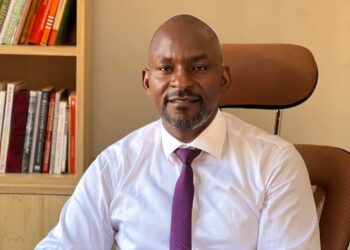As you read this, a Retreat of the National Resistance Movement Parliamentary Caucus is underway at the National Leadership Institute, Kyankwanzi. The Retreat – held following directive of H.E. the President and NRM National Chairperson – is being held under the theme, “Increasing Household Incomes and Wealth Creation: the Critical Role of the Leader”.
For several days now, we have been thinking about the thoughts we should share with our readers – on the eve of the Retreat – reflecting current concerns. We have, to that end, decided to share in totality, an article we published in April 2017 – under the same name.
”At this time of the year, in the corridors of the Executive, Parliament and the technocrats, last touches are being put to the National Budget for the next Financial Year. As usual, the debate rages involving political leaders, technocrats, ‘civil society’, etc – regarding what are supposed to be the priorities in the budget. Development partners continue to make their pitch. The other week, some partners said we should give more to the Health Sector. Now, others still, have waded in – saying the place of honour belongs to the Education Sector! Anyhow, this is also the road to the oxymoron of ‘unfunded priorities’.
Yet, at the overall and national strategic level, this should be a settled matter – for the next 30 years or so. In 2007, Government agreed a Comprehensive National Development Planning Framework (CNDPF) which provided for the development of a 30 year Vision to be implemented through: three 10 year plans; six 5 year National Development Plans (NDPs); Sector Investment Plans (SIPs; Local Government Plans (LGDPs); Annual Work Plans and Budgets.
This is the process which led us to the National Vision Statement, ‘A transformed Uganda Society from a Peasant to a Modern and Prosperous Country’ – the road way to the firm placement of Uganda in a competitive Upper Middle Country status, with a per capita income of US$ 9,500, within 30 years. GDP growth would be sustained at the minimum of 8.52% per annum over the period. First World Status would be attained within half a Century.
Under Vision 2040, a number of sectors/sub-sectors/projects were identified as being critical: the development of high-tech ICT City; massive irrigation schemes; phosphate industry; iron and steel industry; the development of five regional cities (Gulu, Mbale, Kampala, Mbarara, Arua); the development of 5 strategic cities (Hoima, Nakasongola, Fort Portal, Moroto, Jinja); the development of four International Airports; standard gauge railway network with high speed trains; oil refinery and related pipeline infrastructure; multi-lane paved national road network; globally competitive skills development centres; nuclear and hydro power plants; science and technology parks in each regional city; international and national referral hospitals in each regional city.
In other words, while we could and must discuss the opportunities and fundamentals involved in this process, the national accumulation and saving required to complete this journey, issues of management and implementation, the socio-economic vehicles for implementation, etc – the strategic direction is very clear. This, should be at the heart of the national economic doctrine (even dogma!) for the next four decades. And we should not waste too much time over non-essentials.
In the meantime we have continued, and we intend to continue, to look at the experience of some of our partners, as they transited. In this respect, today we very briefly look at the journeys of Sweden and Norway – essentials in transformation from backwardness to modernity.
Sweden experienced two parallel economic processes from 1790 to 1815. On the one hand it underwent an agricultural revolution leading to the commercialization of farming, and on the other, a so-called proto-industrialization, with small industries being established in the countryside – with workers switching between agricultural work in summer, and industrial production in winter. All this fed into the first industrial revolution of 1815 to 1850.
Significantly, Sweden was the first country in the world to introduce (1842) compulsory, universal education.
Exponential export growth (agricultural produce and steel), construction of railway lines and massive investment take off, characterized the period 1850 to 1890. This was the prelude to Sweden’s second industrial revolution of 1890 to 1950. Our purpose is not to delve into the content of the two revolutions – it is to underline the centrality of industrialization to transformation.
Regarding Norway, before industrialization, her economy was based on agriculture, timber, and fishing. Fishing was a supplement to farming and, in many cases, a primary household subsistence activity. This changed with the advent of Norway’s industrial revolution – synonymous with a prolonged period of national capital formation starting in 1865.
Industrialization, produced the first textile mills in the middle of the 19th Century. It is however, important to appreciate that the first large industrial enterprises, just like in the United States, appeared simultaneously with the appearance of a new bourgeoisie in industry and banking.
One important point about Norway. The state is directly involved in the commanding heights of the economy: the petroleum sector, through Statoil; hydroelectric energy production through Statkraft; aluminum production through Norsk Hydro; the largest Norwegian bank DNB; the telecommunication provider Telenor; etc. The state controls 31.6% of publicly listed companies.
In all, scientific economic sense must hold, so that as a people we remain focused on the objectively indicated and necessary path for transformation.”
K. David Mafabi
Senior Presidential Advisor/Political Affairs (Special Duties)
State House
Do you have a story in your community or an opinion to share with us: Email us at editorial@watchdoguganda.com













